Dogs are known for their human-like behaviors. Just like humans, dogs communicate with each other through sound and body language. This blog post will explore the ways that dogs communicate with each other. It will cover what signals they use to show submission or dominance, how they vocalize their feelings to one another, what methods they use to communicate with each other, and more.
Do Dogs Talk Or Speak To Each Other?
Dogs are known for their howling and barking, but did you know they also speak to each other? You might be thinking “speak” is a strong word- after all, can’t dogs just bark at one another? Yes, of course, they bark. But sometimes they also growl or whine. And these sounds that we call ‘talking’ are an elaborate form of communication that goes beyond simple barks.
Dogs communicate with different types of vocalizations: not only barks but also whines, growls, and so on. These noises have specific meanings for the dog making them – it could be something as straightforward as telling another dog to stay away or it could mean more complicated things like anger or anxiety over being left alone. Facial expression is one of the main forms that dogs use to communicate with other dogs. Facial expressions can be seen on a dog’s face which can tell another dog what mood it is in, whether it is happy or sad, angry or content. The tail is another important part of dog communication that cannot be ignored.
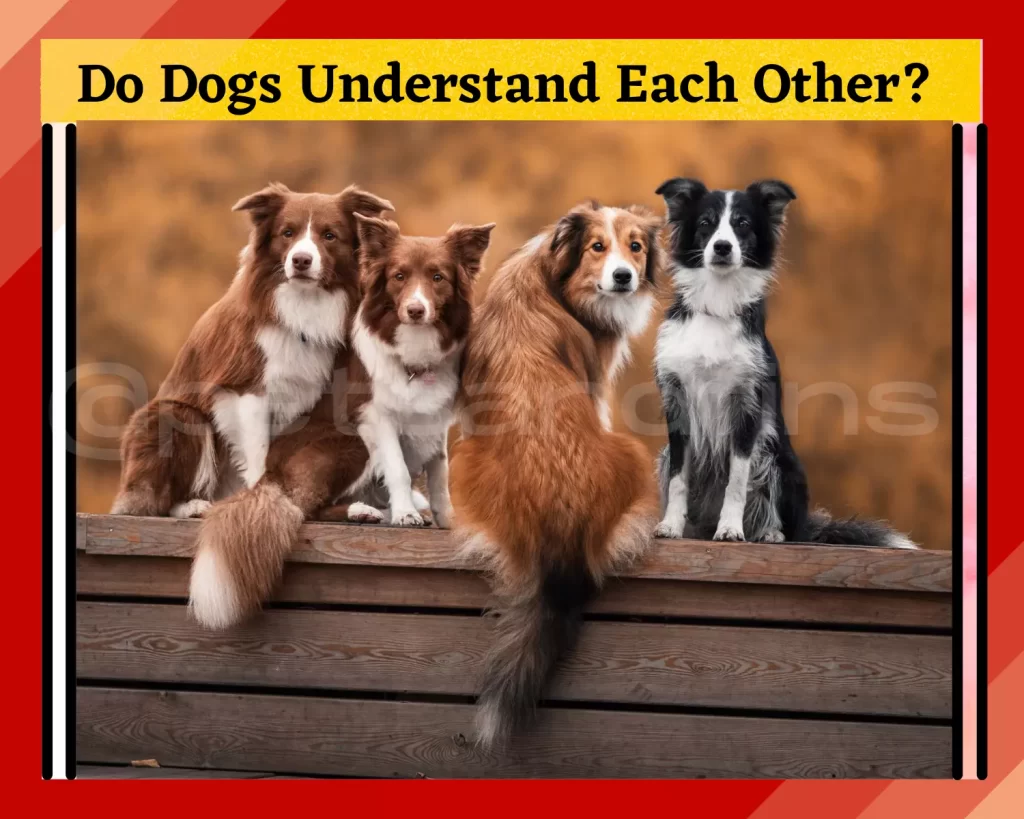
Do Dogs Understand Each Other?
Dogs have a way of communicating with each other that we humans can’t understand. Understanding body language is just one example of how dogs communicate without words. Dogs do understand each other. We can tell by the way they behave when they are together. They seem to know what their friends want and need before they ask for it. They’ve known this since long before we did!” And now that science has caught up with what dogs have always known instinctively about how to communicate, we’re finally able to learn more about them.
Let me give you a very simple instance that will tell you why I am so sure of this. Whilst this is a funny incident, there is a lot to gather from it. My Shih Tzu Miko started instigating my cocker spaniels to bark. She did this by letting out short barks. I called her to come back inside the house. Madam Miko quickly realized that if she barked, I would call her back in. So she came up with a better plan. She slowly crept out again, (while I watched through the CC TV) went near the dog pen, and gave some silent signals which got my spaniels barking again. In fact, this incident is what prompted me to write on this topic.
This incident made six things clear: (Of course with other authentic correlations)
- That different breeds of dogs can communicate with each other without any barrier.
- That communication can occur without barking.
- That, modes of communication can extend beyond only barks.
- Dogs can clearly understand signals.
- Dogs can understand each other very well.
- All dogs have the same methods of communication.
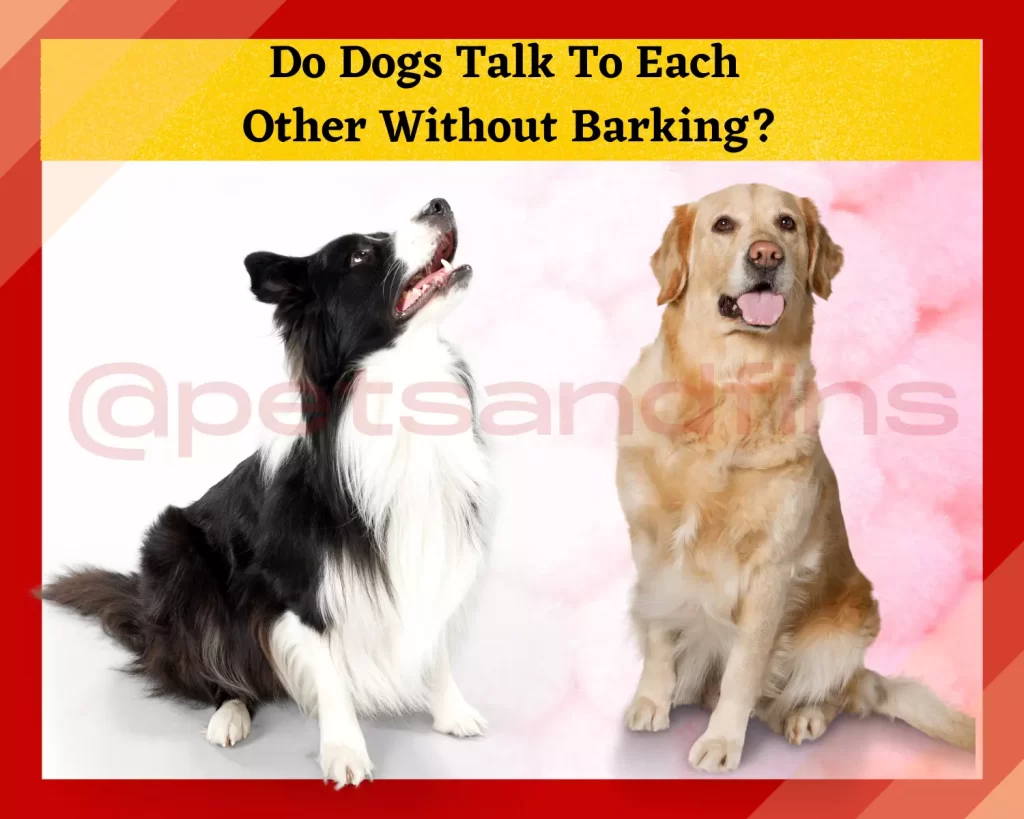

Do Dogs Talk To Each Other Without Barking?
Dogs talk to each other without barking. Have you ever been walking down the street and had your dog tug on its leash towards another dog who is across the street? And then you see your dog bow low with a wagging tail? This is your dog inviting the other to play while saying ‘hey! I mean no harm. They use body language and facial expressions to communicate with one another. Dogs also touch noses when greeting which shows affection. Dogs even emit an odor that allows the other dog to understand several things about the other dog. Through this entire article, we are going to look at the several ways in which dogs communicate with each other both through barking and otherwise.

How Do Dogs Communicate With Each Other? – Prelude
Dogs are pack animals and as such, they have a very structured way of communicating with each other. Dogs communicate in many ways, from body language to vocalization. Facial expression is one of the main forms that dogs use to communicate with other dogs. Facial expressions can be seen on a dog’s face which can tell another dog what mood it is in, whether it is happy or sad, angry or content. Movement also plays a big part in how dogs communicate with one another as well as head position and ear movements for example. The tail communicates information too! Let us examine each of these in a structured way. Before that, here is a link to a paper by Marcello Siniscalchi and others which is pretty detailed.
https://www.ncbi.nlm.nih.gov/pmc/articles/PMC6116041/pdf/animals-08-00131.pdf
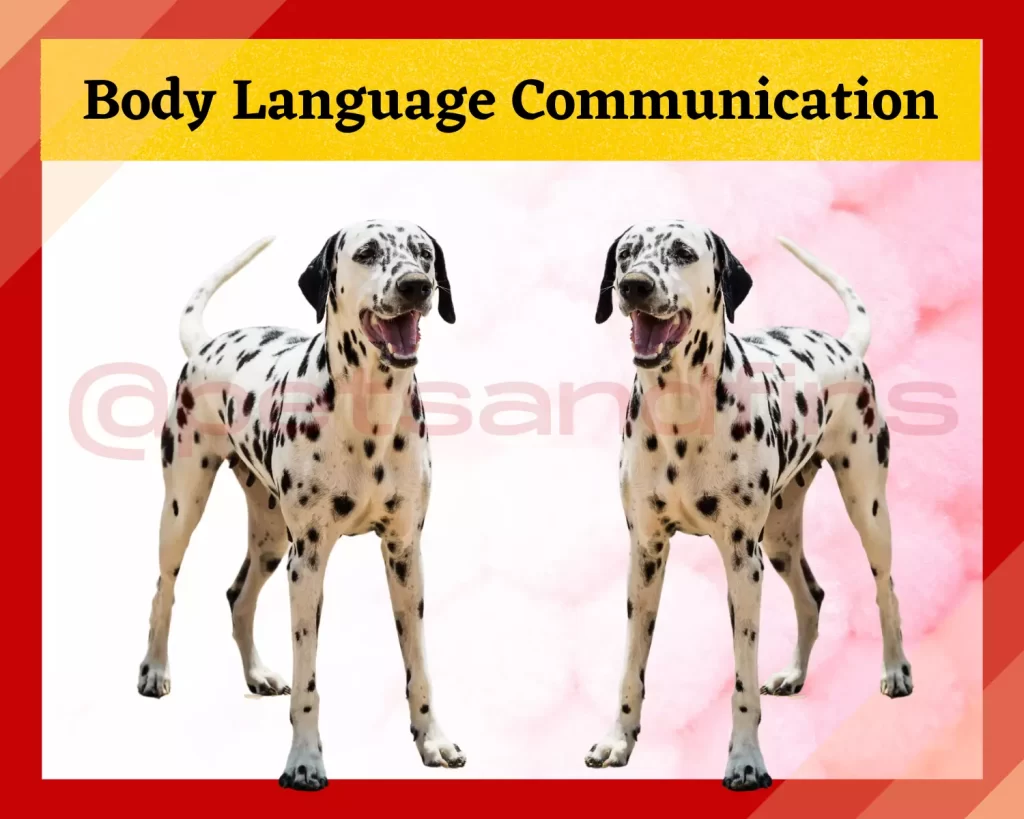
Body Language Communication
Dogs communicate through many types of body language. They can use their ears, eyes, tail, and the position of their head to express how they are feeling or what they want. Dogs communicate through many types of body language. They can use their ears, eyes, tail, and the position of their head to express how they are feeling or what they want. This blog post explores how dogs use these signals so that you know what your dog is telling you!
A wagging tail might show happiness but some other movements might not be as obvious at first glance. If this sounds like something new for you then keep reading on because I’m going to go over everything in detail!
It is important to understand dog behavior for various reasons. The first is always understanding your dog. The second is understanding another dog when you are planning to touch it. The third is a situation where you want to decide if your dog is being received well by the other dog and if you should be retracting your dog to avoid a fight. So, if you are a dog lover or a dog owner, understanding dog language will prove useful. Let us begin with Body postures.

Body Postures
This section is going to deal with 10 different types of dog body postures which will help you understand what each one means beginning from Crouch to rolling on the sides.
Crouch
Dogs that offer a crouch with their front legs extended and have a wagging tail, it’s an invitation to play and have some fun. This is a universal dog language sign. It’s a direct way of saying that the dog is not interested in a fight for dominance and just wants to have fun.
Roll on Back
As your dog rolls on its back, you might be wondering why. Well, that’s because he is not bothered about anything and is in a state of pure bliss. Rolling onto their backs means they are at peace with themselves and the world around them. It’s also common for dogs to roll over when they’re hot.
Muzzle Nudge
A mild nudge by the dog under the jaw of the other dog indicates acceptance and submission to the dominant dog. The muscle which is the fore-face of the dog comprises the upper and lower jaws. Mild nudges usually indicate that the two dogs are okay with each other in some capacity. It also means the muzzle of the other dog shows acceptance.
Upright
A dog’s posture is an indicator of its personality. A stiff, upright position in dogs indicates a dominant personality. It also has a gait of authority. A position to show that the dog is unyielding and demands submission.
Forward Slope
When you take note of how they are standing, you’ll see that their weight is distributed equally between all four paws. The tail will be held high, and their ears will be pricked forward attentively. A forward slope with braced feet and a deep-throated growl is the canine equivalent of “bring it on!” This is a dog ready to engage in conflict.
Bristle up
A dog’s hair bristles up when it is scared or uncertain. This means that the dog is feeling threatened or he’s nervous in new surroundings and probably expects that he is susceptible to attack. When a dog bristles up it means the animal is scared. It’s a protective cue from them to let you know not to come closer. Separating the dogs would be the best thing to do.
Cringing
Dog cringing is a sign of submission, fear, or worry. It’s an act to submit to the dominant party to avoid aggression and violence. Cringing need not always mean that the dog is scared can also merely mean that the dog wants to avoid a fight.
Still
sitting still or standing still while allowing another dog to sniff implies that the dog is fine with the approach by the other dog and is willing to be friendly after sniffing is over. It is important to understand that dogs find out a lot about the other dog by sniffing them and recognizing what the odor means.
Underbelly
A dog showing its underbelly is a sign that the dog does not feel threatened and has no wish to fight. The posture of exposing the belly suggests trust and submission towards their opponent, but can also be seen as an invitation for play or chasing games.
Raised Paw
The dog indicates that the dog is either stressed or scared. It may also mean that the dog is uncertain and uncomfortable in the current situation. It is a dog telling the other that it is not sure how it should understand the other dog or its intentions. It is like “hey dude I’m not sure about what you want“.

Head Position
Head positions can be mainly classified as three.
- A high head looking straight indicates dominance.
- Dog which looks away towards the sides indicates that it is not interested in an attack and is trying to calm the other dog down.
- As the most passive action a dog lowers its head to indicate submission to the other dog.
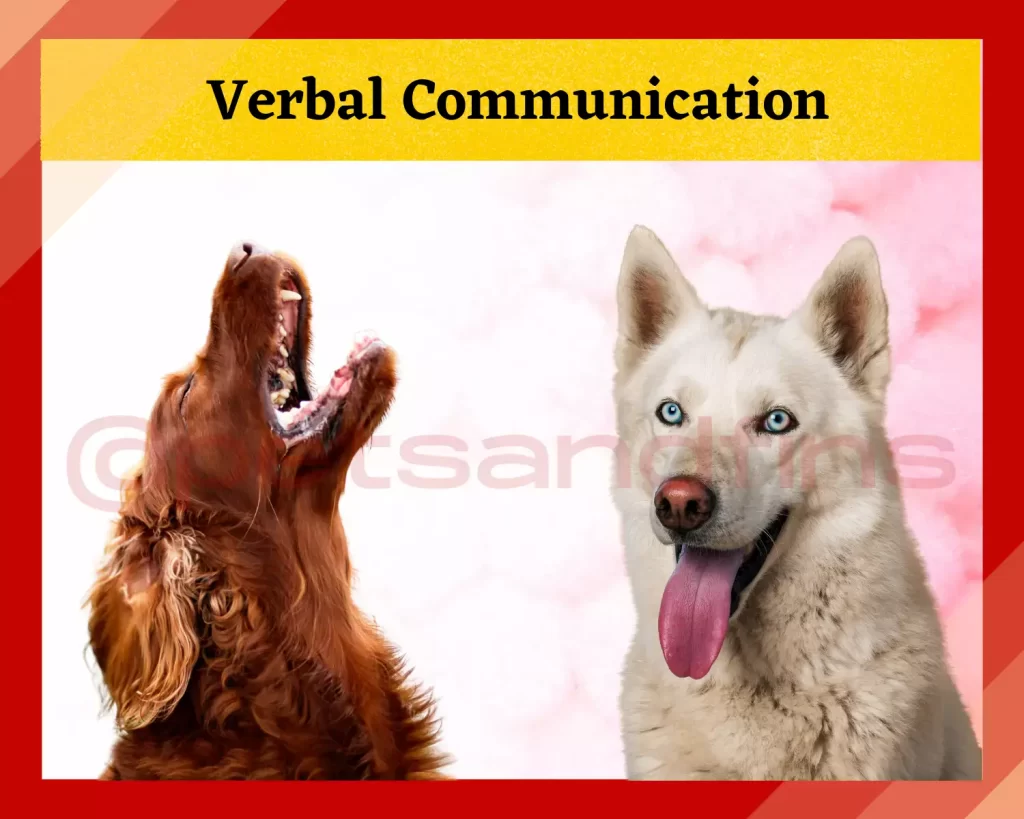
Verbal Communication
Dogs communicate verbally with each other verbally too. This verbal communication can be divided into barks, howls, growls, whines and whimpers, and long calls.
Bark
there are several types of barks in dogs some of which are even communication to humans. However, in this section, I will limit the types of barks to the ones which are used by dogs to communicate with each other.
Mid-Range Stutter
Dogs use a mid-range pitched bark like a stutter to initiate play. This is used by the dog to invite the other dog and indicate that it is not interested in a clash of dominance but wants to have some fun.
Rising Bark
The other type of bark used by dogs to communicate with each other is a rising bark where the dog indicates it is having fun and wants more of whatever is happening.
Howls
Dogs howl to tell the other dog that “hey dude! you are entering my territory“. This is an indication by the dog to inform the other trespasser that it holds the position of dominance and will not tolerate any claim for territory.
Another type of howl is called baying, where the dog is calling out to any mates who are nearby to join hands for whatever is the cause.
Growls
A low pitched growl is the first indication by a dog back off. This is a direct indication of dominance.
A deeper growl from down the throat is a way of saying “stay away“.
A low-pitched growl which changes to a bark is when a dog is calling for assistance.
A mid-range pitch growl is when the dog is scared but willing to defend itself.
A high-pitched growl is when the dog is terrified and trying to defend itself by showing that it is powerful.
Whines and Whimpers
Wines in whimpers are when dogs are hurt, injured or scared of something. A moan may indicate that the dog is in pain. If the dog is whimpering on a continuous basis, and they are short, it could indicate excitement.
A long call
A prolonged call which is more like howling or singing is a call to the mates for help.
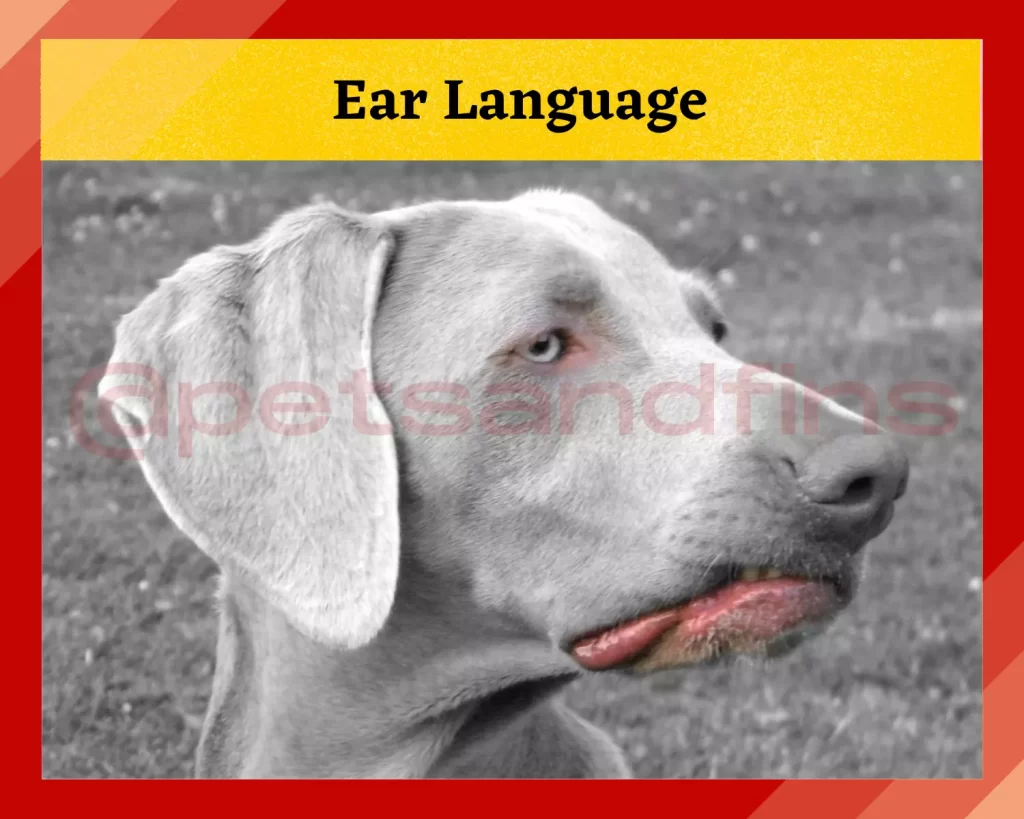
Ear Language
Dogs use ears to indicate a lot of things in combination with other body postures. Let us look at four main ear postures in this section.
Backward
A completely retracted ear towards the back of the head shows fear and submission. This is usually accompanied by a lowered head.
Slightly Backward
A slightly backward ear indicates that the dog is undecided about what it wants to do and needs time.it also indicates that the dog is uneasy not sure about the intentions of the other dog.
Close To The Head
If the ears are just close to the head and not pressed then the dog is indicating peace and calm and telling the other dog that it does not intend to engage in conflict.
Pressed Down
If the ears are down, completely touching the head then it is a clear-cut indication of fear in the dog.
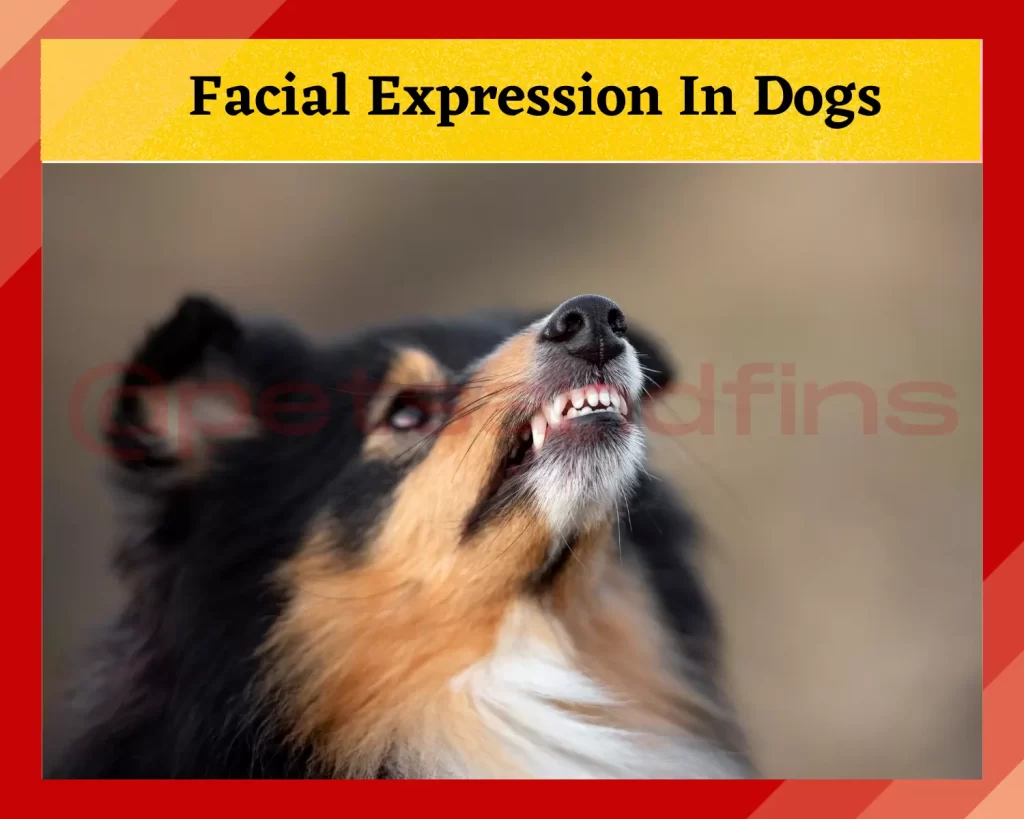
Facial Expression In Dogs
A dog’s facial impression is very important when they communicate with each other. Dogs have a complex way of communicating with each other and their facial expressions are often the most telling. This includes everything from their ears, to their tails, to even how they hold their mouth open or closed! A dog’s facial expression can tell you if he is feeling happy, sad, tired or even angry. “A dog’s face can say a lot about how he feels.”
Pro Tip: As a precursor, it has to be understood that reading a dog’s expression must not be in isolation but in combination. This means that when you’re reading the expression of a dog you will not just look at just the eyes or any other part but the entire body language.
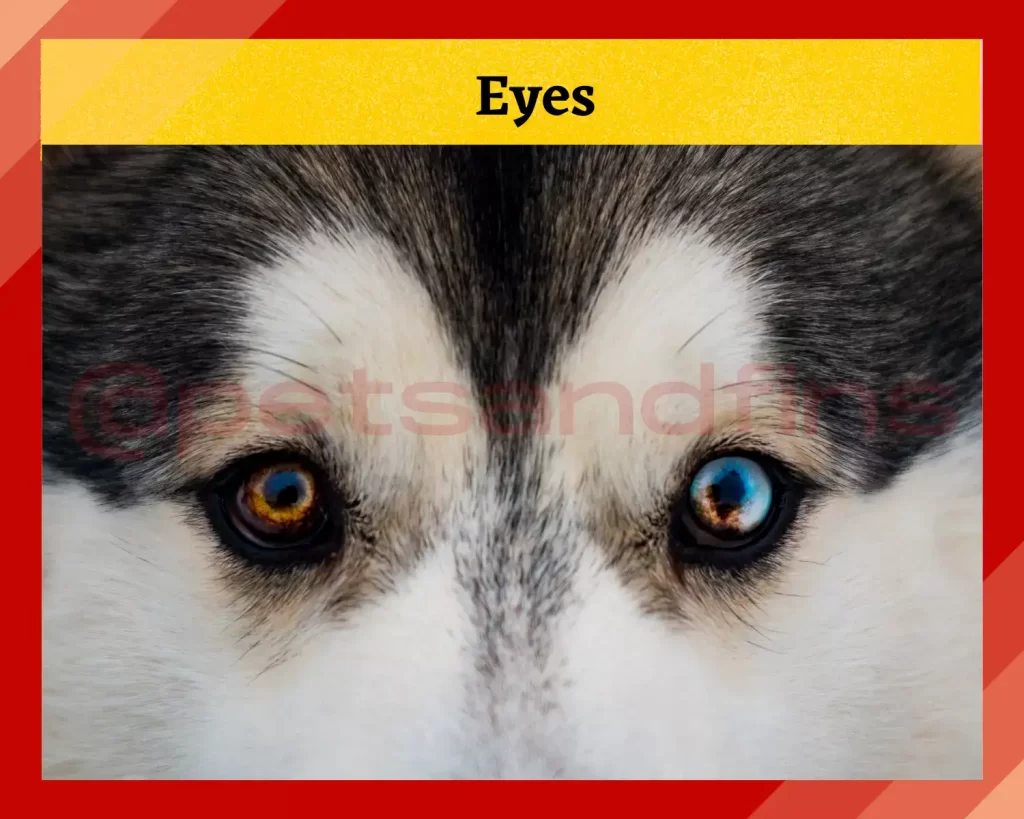
Eyes
Hard Stare
Dogs are known for their pack mentality and the desire to establish dominance in a social hierarchy. A hard stare is a clear indicator of an attempt to dominate the other dog, but what makes this happen? Here’s the thing, when your dog stares at another it is more than likely that he sees himself as more dominant. This can be dangerous if you are around other dogs because there could potentially be a fight over who is on top!
Soft Gaze
Dogs can give off a wide range of signals to communicate their feelings and intentions. The soft gaze in dogs shows that they are relaxed, don’t feel threatened or need to defend themselves. It also means that the dog is comfortable in that environment. It’s important to know when your dog is feeling scared or threatened so you can help them feel safe and comfortable.
Eyes Looking Away
Dogs will often look away when they feel like they are losing the fight. This is an act of submission! This means that if your dog looks away, it is giving up and trying to end the conflict. When a dog looks away from another one, it may be submitting because it recognizes the dominant position of the other.
Blinking
Did you know that a dog’s blink can also relay an emotion? A dog will close their eye to express peace and calm. The logic is very simple because – a dog who is staring hard is being alert and hence blinking does not occur.on the contrary, when the dog is blinking it indicates that the dog is calm and relaxed and does not intend to pick up a fight about who is the dominant one.
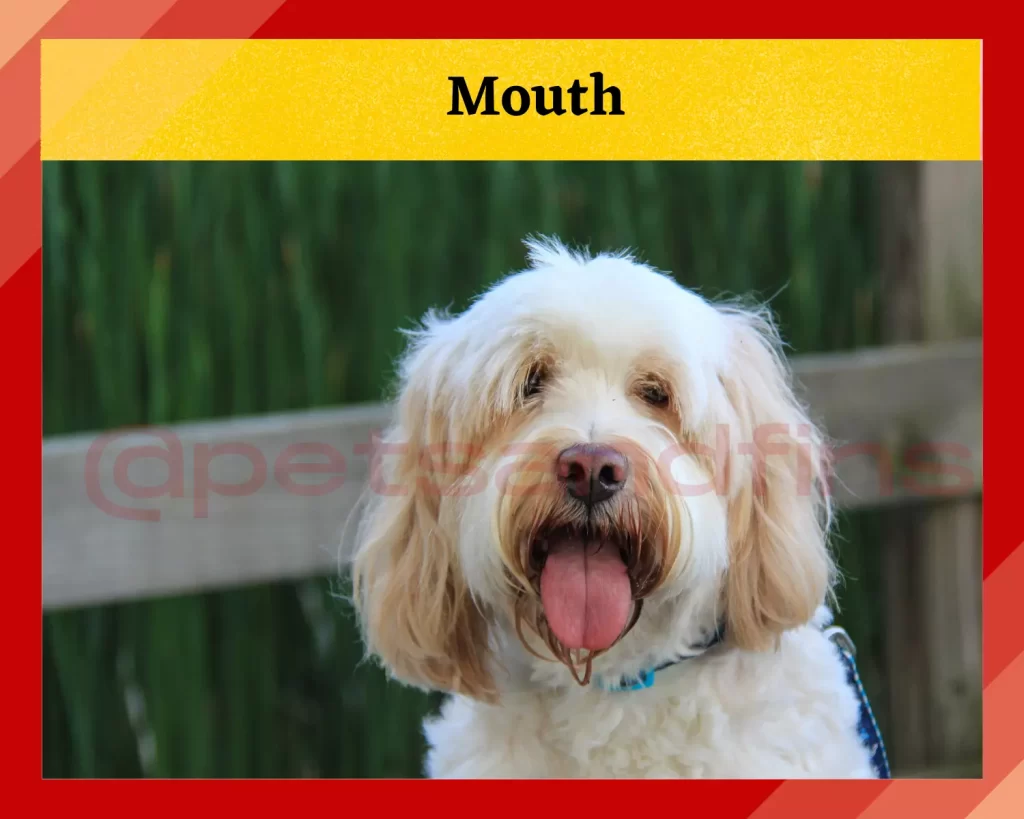
Mouth
The mouth also plays a very important role when it comes to a dog’s expression and communication with another dog. there are several ways in which a dog can position its mouth. Let us interpret each of the signals given through the mouth
Slightly Open
If a dog has his mouth open slightly and his tongue covering the bottom teeth, he is most likely relaxed. This is a relaxed position for a dog which is often accompanied by an exhale to release tension in their body.
Fully closed
if your dog has his mouth closed and he’s not panting or barking, then he may be listening intently. Dogs use this behavior as an indication that someone (or something) has caught his attention and he wants more information on what it may be; this could include other animals, and also people!
Retracted Lips
Ever wonder why a dog is baring his teeth and retracting his lips? This behavior can be accompanied by a snarl, growl, or bark. A dog might do this when he’s feeling threatened by another animal or person. A warning sign that you should back away slowly.
Elongated
Submission is a common behavior in dogs, and it can be broken down into two main categories: passive submission and active submission. The first category, passive submission, is when the dog’s mouth is open with back teeth showing while their lips are elongated. This shows that they feel threatened by a situation or another animal but do not want to attack. In contrast, active submission occurs when the dog rolls over on his side.
Smiling
A dog smile is a calming signal for an aggressive dog to calm down. Here are the signs that accompany a genuine canine grin: The corners of their mouth turn up or curl into something resembling a human grin; their lips may be pushed back over their teeth; the skin around their eyes crinkles.
Yawning & Lip Licking
Dogs can also yawn when they are trying to pacify an aggressive dog. This happens more when the other dog is giving aggressive signals like bearing its teeth and snarling. This is also achieved by a dog licking its lips.
Sneezing
A dog indicates that it is in a playful mood and not serious when it sneezes. The expulsion of air like a sneeze is not involuntary but a deliberate gesture to indicate that they are just playing.
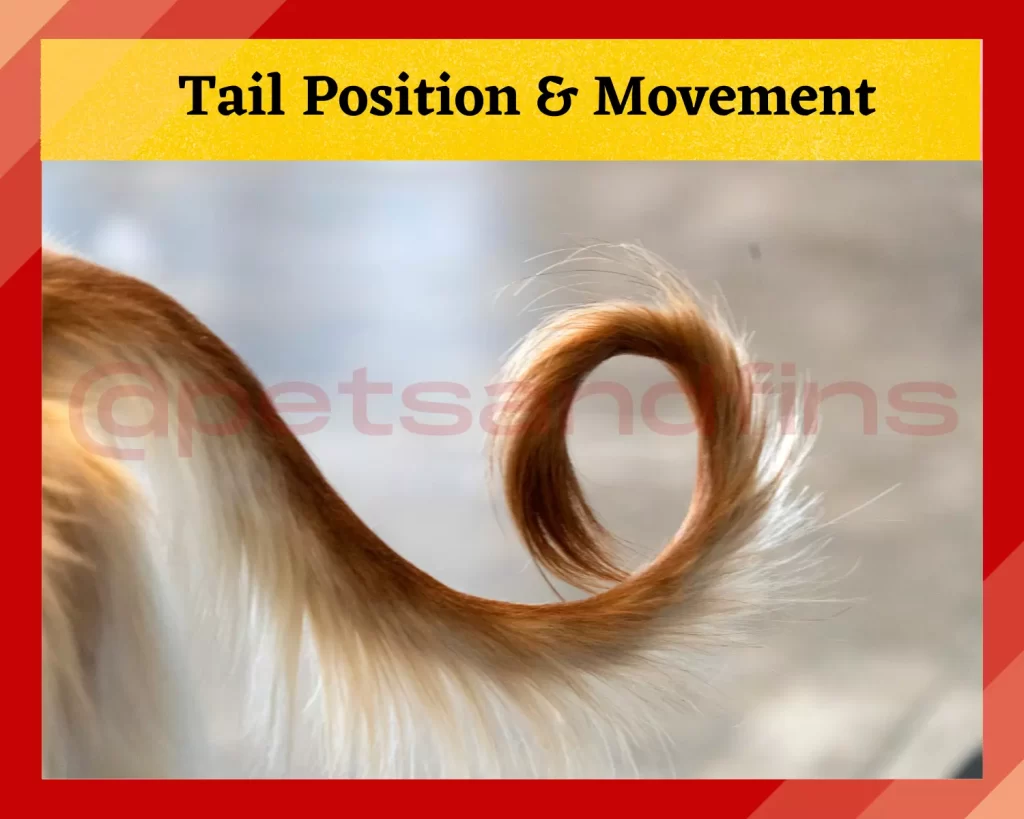
Tail Position & Movement
The tail position is an important part of communication between dogs and there are several tail positions and movements. However, for the purpose of this article, I will cover a few basic tail positions and movements.
- A tail held high means that the dog is confident, comfortable, and dominant. The tail is right at the centre and pointing straight upwards.
- Tail downward is either when a dog is sick or when the dog is indicating submission. In this case, the tail goes right between the hind legs.
- A mild wag with the tail Indicates friendliness.In this case the tail moves very slightly to the right and left.
- A broader Wag with the tail indicates happiness. In this case, the tail swings a lot to the right and left.
- A really fast wag, swinging the tail from the right to the left is indicative of excitement.
Wrapping up:
Overall dogs use a lot of methods to communicate with each other including barking and they very well understand what the other seeing irrespective of the breed or the place from where the dog is. All that matters is that dogs are capable of communicating with each other and probably use more gestures than we humans do.
Dogs are good at understanding each other. They use body language, facial expressions, vocalizations, and more to communicate with one another. It’s not just about the words they say; it’s also how they sound that makes their message clear to others who can understand them. And don’t forget that dogs detect moods and much more from mere scent!


